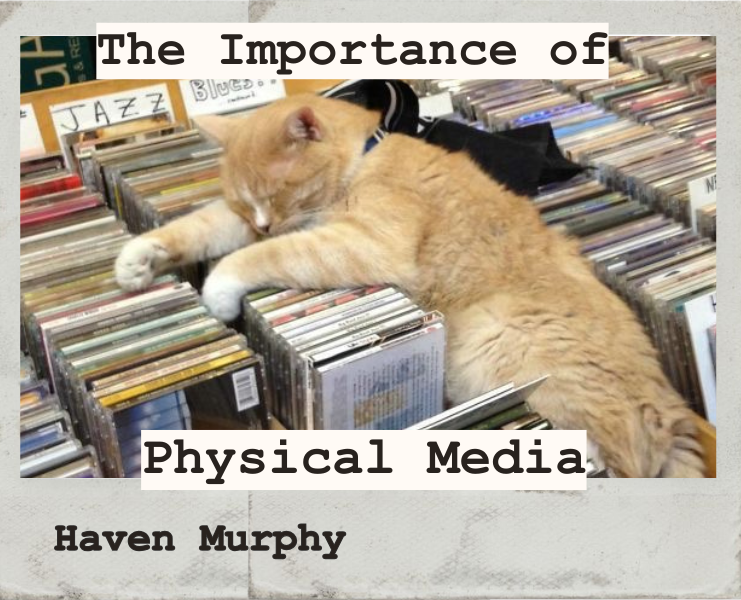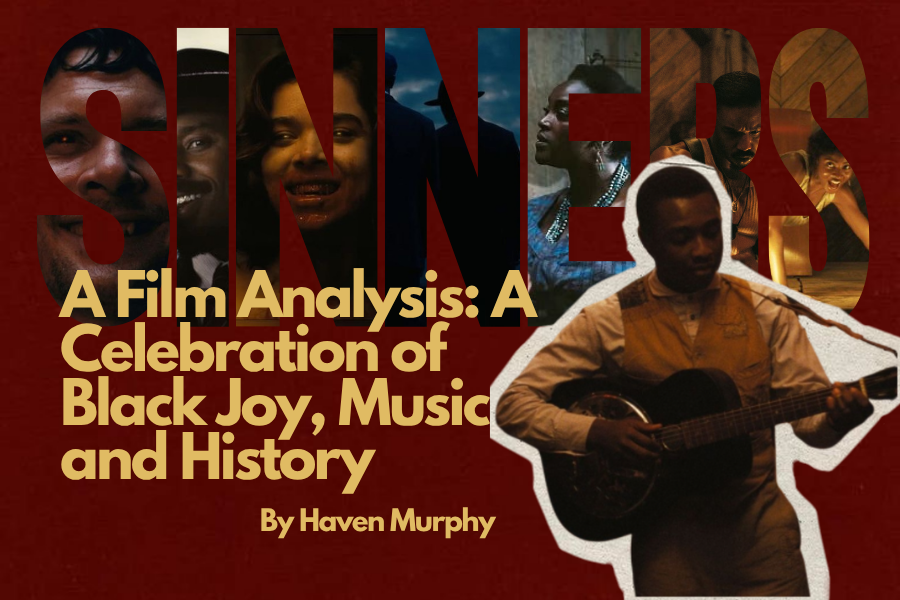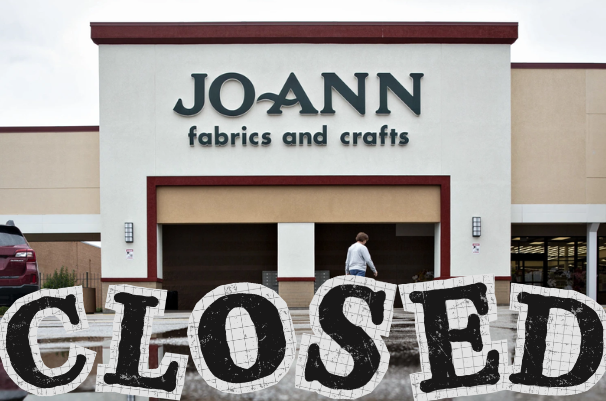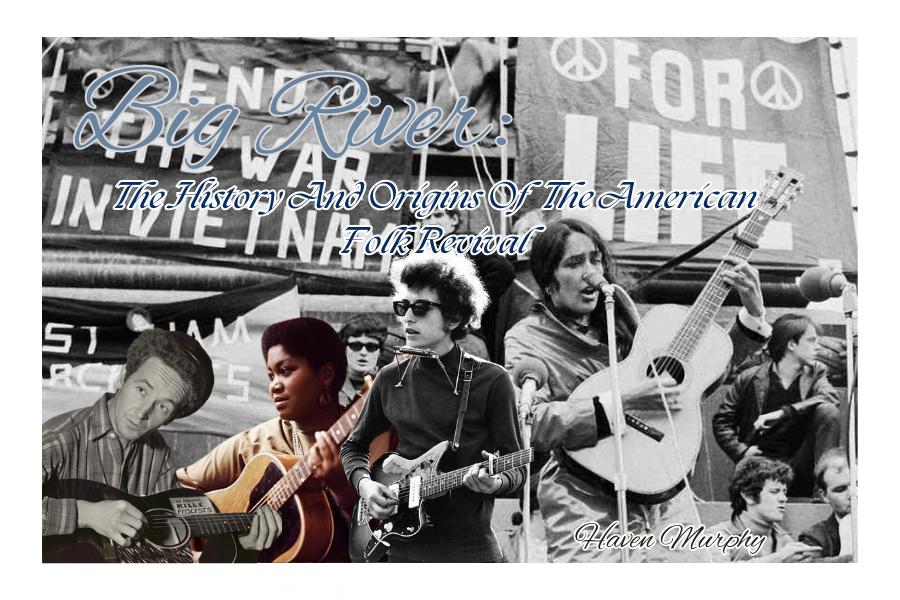Throughout the 1990’s, the general public was introduced to the internet–primarily, the World Wide Web. With the introduction and constant growth of technology, industries such as entertainment began to digitally adapt over time. As of 2025, most forms of media–especially film and music–are digital. The majority of both vintage and contemporary film and music is behind a paywall of various streaming platforms. Physical media is becoming less of the “first option” compared to digital media. However, this does not mean that physical media is going anywhere, nor does it mean digital media itself is a bad thing.
While the access of digital media is convenient in many ways, such as time, money and availability, the permanence–or lack thereof–poses a problem for many. For example, if media is bought online, the buyer now [digitally] has the media in their possession. However, in the situation of a company losing the rights to that specific media, once it is removed from the platform, it is no longer in your possession. This lack of ownership and permanence is one of the biggest downsides to digital media. Physical media, however, can remain in your [physical] possession, long after it may not be online or in stores!
Think about how information has been preserved and now lasts today. Written records from 3200 B.C.E Egypt to diaries found by soldiers, much of the information we have from the past has been physical. But of course they did, how would it happen digitally? The rise of digitalization should not diminish the physical preservation of media. Not just media like film, but music as well. Nowadays, most curate their music taste and express it through digital streaming, with platforms like Spotify, Apple Music, or YouTube Music. The biggest disadvantage of digitally streaming through most music platforms—including the ones previously mentioned—is that a paywall usually lies between you and the ability to listen to what you want to as freely as possible. Collecting and listening to music physically is the secure way around the numerous subscriptions required for quality listening.
However, there are many aspects of physical [music] media that would render some more comfortable listening digitally. Financial factors like the price of collecting CDs, cassette tapes, or vinyl records and the devices to play them like walkmans, record players and stereos can quickly grow expensive—even more so if your life consists of things that are already pretty pricey. Convenience can become a disadvantage as well, as the weight of lugging around objects just to listen to music gets pretty heavy over time. Most physical records like vinyls and CDs require care that some find inconveniencing, like temperature and storage control. In an interview with staff members of The Tower, we found that when watching films, listening to music and reading, each person had preferences for both digital and physical media.
When interviewed, the majority preferred watching movies and listening to music digitally via online streaming platforms like Netflix, Hulu and Spotify. Some enjoy both and harp on the experience of physical media, but still prefer digital for convenience sake. Editor Jayne Hornich states, “I guess I don’t really think about that much honestly but when I was younger, I preferred DVDs and now I would probably prefer Netflix or Hulu but it really just depends on the movie I guess. I also don’t have a DVD player anymore so that factors into it.” Ms. Taylor shares, “I prefer streaming platforms for convenience sake. I do however miss rifling through my DVD collection before a roadtrip to pick out the perfect movie for my portable DVD player.”
Similarly to film, most preferred to listen to their music via digital streaming. Writer Alexa Steffen’s statement, “I definitely prefer streaming services, especially Spotify, because there is such a huge variety of music that I can listen to. I also like that I can try listening to many different artists that I am not sure if I will like or not without committing to buying a CD” highlights a major difference between digital and physical media. Today, nearly everything is digital, which allows people to “test” what they consume, rather than making a commitment to buy or rent something that they may or may not like. While you could still donate or return [in the case of renting] your physical media, it is still seen as a bit of an inconvenience or tedious process.
Every interviewee preferred physical literature like books and magazines! Some claim that digital books [e-books]–like kindle or audiobooks–can be a little difficult to focus on, “–also I think that E-books would strain my eyes too much, and I have trouble focusing on audiobooks. I will sometimes, however, listen to an audiobook on long car rides if I have already read the physical book.” [Steffen] According to a few responses, the overall experience of physical books is one of the most enjoyable aspects of it being physical. “I really like physically holding a book and turning the pages,” [Steffen]. Ms. Taylor states she prefers physical copies to pick out at the library, “When it comes to books, I much prefer a physical paperback copy. I love picking them out at the library” [Taylor]. Writer Sydney Barnette shares, “I prefer physical books so I can write all over it and go back and read it over and over again!” [Barnette].
Nearly every response preferred digital media to physical—save for one. But what does this say about the importance of physical media, or the preservation of media in general? It shows that digital media caters to those who prefer convenience and the ability to try something new without the commitment of buying physical media and keeping it around, even if they may not really like it. Writer Caleigh Satterfield relates to this idea, saying, “DVDs and movie theaters are much better experiences, but netflix often convinces me to watch movies/shows that i wouldn’t normally watch or be willing to specifically spend money on.” However, as technology advances and time goes on, paywalls become an increasing con to digital media.
According to an early 2024 Variety article, [United States] consumers pay an average of over $60 per month on video streaming services. Expenses is a common downside of physical media, even more so in the age where it is no longer the majority’s first option. But considering the price of digital streaming services each month is only expected to rise, to some, physical media is more appealing than ever. Alongside rising prices, many consumers are realizing that they don’t really own the digital material they pay for, contrary to physical media. Neither of which you wholefully own, of course, ownership remaining to the company–but the difference is, even if a company loses the rights or ceases production of a certain media, it could only really remain in your possession if it is physical.
Fellow student Vivian Ngyuen conducted a school-wide survey on the topic of forced digitalization in media resulting in the decline of consumption of physical media. The results show an overarching uncertainty in the relevance of physical media.
“Growing up, I’ve always gravitated toward physical media. Whether that be my plethora of DVDs [Disney, Barbie, etc.] to the CDs my parents would play during car rides, the physical copies have always made me feel more connected to what I’m seeing or hearing and to those around me.” Following up, Ngyuen points out what digital media contributes to in today’s society, “Digital media, such as streaming platforms for various movies/shows, games and music have become increasingly mainstream in recent years. I’ve noticed with physical media becoming more obsolete, the rise in digital media has become the norm. I do find digital media to be more useful nowadays as technology has advanced. Being able to listen to music wherever and whenever has made my days more enjoyable. Having easier access to movies, music, and video games surely has its advantages.”
One of the first feelings people may relate to physical media is nostalgia, which Ngyuen does while highlighting the overall importance of the media, “However, nothing will compare to the memories I’ve made watching DVD Barbie movies with my cousins or playing video games with my Nintendo 3Ds. The physical aspect of these experiences allow me to feel and connect beyond a surface level. Though digital media has made these activities efficient and convenient over the years, the nostalgia [and connection] I have for physical media will always be present in my mind and heart.”
Aside from digital and physical entertainment, physical forms of media like photo books, film cameras, and diaries/documentation have recently been digitally adapted. While digitalization is not inherently negative, the increasing adaptation of physical media to digital diminishes the permanence physical media offers. Nearly nothing you or anyone will ever own may last forever, but the physicality of what you love can be preserved for years to come, connecting past memories to future experiences, whether it is your generational family photo book, the old box of CDs your dad left you or the dusty, old books scattered throughout your public library. Even as nothing lasts forever, as long as you take care of it–like everything around you [including yourself], what you love about physical media will last a lifetime.









